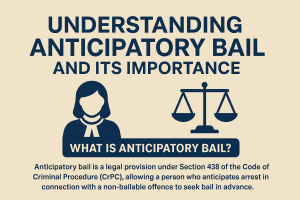Introduction
In the realm of criminal justice, evidence is the foundation of every conviction or acquittal. While direct evidence—such as eyewitness testimony or confession—may seem ideal, it is not always available. In many criminal cases, circumstantial evidence plays a pivotal role in establishing guilt beyond a reasonable doubt. The Indian judiciary has, time and again, upheld that a conviction can be based solely on circumstantial evidence, provided it forms a complete chain leading to no other conclusion than the guilt of the accused.
What is Circumstantial Evidence?
Circumstantial evidence refers to indirect evidence that does not directly prove a fact but allows the Court to infer its existence from the surrounding circumstances. It differs from direct evidence, which speaks directly to the fact in issue.
For instance, if a person is seen entering a room with a weapon and the victim is later found dead inside, that fact—combined with other circumstances—may form circumstantial evidence of the person’s involvement in the crime.
Under the Indian Evidence Act, 1872, both direct and circumstantial evidence are admissible. However, courts must exercise extra caution while relying solely on circumstantial evidence.
Conditions for Relying on Circumstantial Evidence
The Supreme Court of India, in several landmark rulings, has laid down essential principles for basing a conviction on circumstantial evidence. The most cited among them is the judgment in Sharad Birdhichand Sarda v. State of Maharashtra (1984) 4 SCC 116, where the Court laid down the famous “Five Golden Principles”—often referred to as the Panchsheel of Circumstantial Evidence:
-
The circumstances from which the conclusion of guilt is to be drawn must be fully established.
-
The facts so established must be consistent only with the hypothesis of the guilt of the accused.
-
The circumstances should be of a conclusive nature and tendency.
-
They should exclude every possible hypothesis except that of the guilt of the accused.
-
There must be a chain of evidence so complete as to leave no reasonable ground for the conclusion consistent with the innocence of the accused.
These principles ensure that convictions based on circumstantial evidence are not founded on suspicion or conjecture but on logical and unbroken inference.
Judicial Approach in India
The judiciary has consistently reiterated that circumstantial evidence must be evaluated with utmost care. In Hanumant Govind Nargundkar v. State of Madhya Pradesh (1952 AIR 343), the Supreme Court cautioned that each circumstance must be firmly established and the cumulative effect should lead to the inference of guilt.
Similarly, in State of Rajasthan v. Kashi Ram (2006) 12 SCC 254, the Court held that “suspicion, however strong, cannot take the place of proof.” Thus, the burden on the prosecution remains the same even in cases based entirely on circumstantial evidence—to prove guilt beyond reasonable doubt.
Practical Importance in Criminal Trials
Circumstantial evidence becomes crucial in cases where:
-
There are no eyewitnesses, such as in murders committed in secrecy.
-
The accused has destroyed or concealed evidence.
-
Scientific and forensic evidence—like fingerprints, DNA, or call records—forms the backbone of the prosecution’s case.
In such situations, each circumstance acts as a piece of a puzzle, and when all are put together coherently, they form a clear picture of the crime. Courts often rely on modern tools like digital evidence, surveillance footage, and electronic records, which are increasingly becoming valuable circumstantial evidence in the digital era.
Challenges and Cautions
While circumstantial evidence is powerful, it also carries inherent risks.
-
Possibility of Misinterpretation: The same circumstance can often point to multiple inferences.
-
False Implication: Over-reliance on weak or incomplete circumstantial links may lead to miscarriage of justice.
-
Need for Corroboration: Courts generally seek supporting material before reaching a conclusion.
Therefore, judges must balance prudence with logic, ensuring that every link in the evidentiary chain is strong, consistent, and corroborative.
Conclusion
Circumstantial evidence, when properly appreciated, can be as compelling as direct testimony. It often serves as the only reliable path to justice in complex criminal cases where direct evidence is absent. The Indian judiciary’s cautious yet pragmatic approach ensures that truth is established through reasoned inference, safeguarding both the rights of the accused and the interests of justice.
In essence, the strength of circumstantial evidence lies not in one isolated fact but in the unbroken chain of circumstances that lead unmistakably to the conclusion of guilt.



